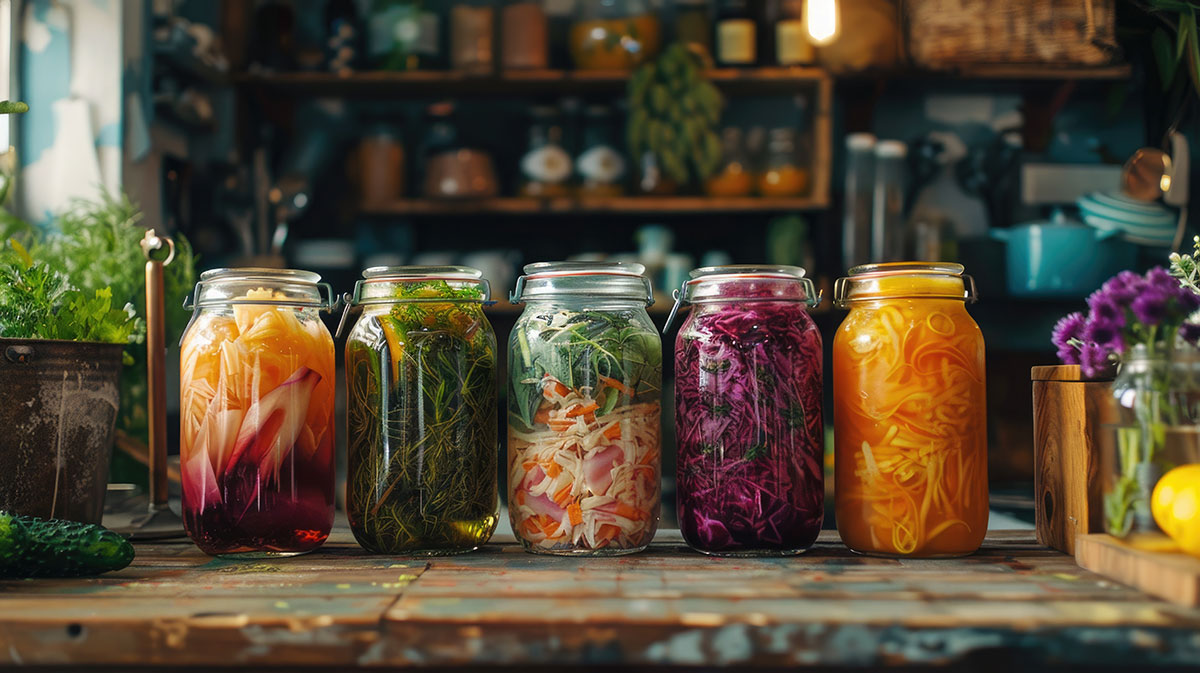Discovering the World Through Fermentation
I never thought I’d become obsessed with fermentation. For years, I traveled the world chasing experiences, flavors, and inspiration for my remote lifestyle. I tried local dishes in bustling markets, sat in tiny cafés off the beaten path, and sampled street food that was both thrilling and terrifying. Somewhere along the way, I realized that some of the most memorable flavors came from fermented foods—kimchi in Seoul, miso in Kyoto, kombucha in Bali. Each bite told a story, carrying the history, environment, and culture of the place.
Back in Brooklyn, I wanted to bring some of that storytelling home. I started experimenting with fermentation as a hobby—a way to reconnect with the flavors I loved abroad while exploring creativity in my own kitchen. What started as curiosity has now become a full-blown obsession, and it’s changed the way I cook, eat, and even think about travel.
Starting Small: Fermenting at Home
When I first tried fermenting at home, I kept it simple. I started with sauerkraut, chopping cabbage and massaging it with salt, then pressing it into jars and waiting. The first batch was a little too salty, the second batch too soft, but with every attempt, I learned more. Fermentation requires patience—something that’s surprisingly hard for a traveler used to moving from city to city—but the process is incredibly rewarding.
After sauerkraut, I moved on to pickles, kimchi, and even small-batch kombucha. Each experiment brought new challenges and discoveries. I learned that the temperature of my Brooklyn apartment affected the fermentation speed, that different salts and sugars created subtle variations, and that the tiniest adjustment could completely change the flavor. It’s part science, part art, and all hands-on fun.
Bringing Travel Flavors Home
The most exciting part of fermentation for me is recreating the tastes I encountered while traveling. I’ve tried a Korean-style kimchi inspired by a tiny market in Seoul where the cabbage was perfectly crunchy, spicy, and aromatic. I’ve experimented with Japanese-style pickled vegetables that reminded me of Kyoto’s quiet temples and early-morning markets. Even simple ferments like sourdough starters carry the essence of the environments they were cultivated in, allowing me to play with flavors I’ve only tasted abroad.
Fermentation allows me to carry those experiences home in a literal, edible form. Each jar is a memory—a flavor snapshot of a place, a moment, or a meal. And while I can’t transport the exact streets, smells, and conversations of my travels, I can share something tangible with friends and family in Brooklyn.
Patience, Creativity, and the Joy of Experimentation
Fermentation has taught me lessons that extend far beyond the kitchen. First and foremost, patience is essential. Unlike a dish you cook in under an hour, fermented foods demand time, observation, and trust in the process. You have to check the jars, taste small samples, and accept that not every experiment will succeed.
Creativity is another key lesson. The same basic ingredients—a cabbage, salt, and spices—can produce wildly different results depending on technique, environment, and additions. I’ve blended flavors inspired by my travels: a Korean-Italian fusion kimchi with garlic, chili, and rosemary, or a kombucha brewed with local Brooklyn honey and mango from a trip to Thailand. Fermentation encourages playfulness and experimentation, which is exactly what keeps me engaged.
Sharing Fermented Flavors
One of my favorite parts of this hobby is sharing my creations. I’ll invite friends over for tasting nights, letting them try jars of kimchi, pickles, or kombucha that I’ve been cultivating for weeks. The conversations always start with the flavors but quickly expand to stories about travels, cooking techniques, and cultural experiences. Fermentation has become a bridge between my adventures abroad and my life in Brooklyn, connecting people in a meaningful, sensory way.
I also share my experiments with my remote work community. Even in a virtual space, food can spark conversations about culture, curiosity, and creativity. A jar of kimchi or a bottle of kombucha becomes more than something to eat or drink—it becomes a story, a memory, and a conversation starter.
Brooklyn as a Fermentation Playground
Living in Brooklyn makes this hobby even more exciting. Specialty markets, farmers’ stands, and co-ops offer access to diverse ingredients from around the world. I can pick up Korean chili flakes, Japanese miso, or fresh organic vegetables without leaving the city, and then blend them into new creations inspired by my travels. Brooklyn itself becomes part of the experiment, a home base where global flavors meet local ingredients and my own imagination.
The city also provides space to experiment, share, and learn from other enthusiasts. Farmers’ markets and food workshops are a great way to exchange tips, taste ideas, and explore new techniques. It’s a vibrant, creative community that mirrors the diversity I experienced while traveling.
Fermentation started as a curiosity, but it has become a meaningful part of how I experience both food and travel. It’s taught me patience, creativity, and the joy of slowing down to appreciate process as much as product. More than that, it has allowed me to carry pieces of my journeys back home to Brooklyn in a tangible, flavorful way.
Each jar I open is a memory, each taste a story, and each experiment a lesson in curiosity and care. Fermentation reminds me that travel isn’t just about seeing new places—it’s about finding ways to hold on to them, to learn from them, and to share them with others. My kitchen in Brooklyn may not be a bustling street market in Seoul or a quiet temple in Kyoto, but through fermentation, it becomes a little world of its own—a place where global flavors, memories, and creativity come to life.
